- Home
- :
- All Communities
- :
- User Groups
- :
- Conservation GIS
- :
- Documents
- :
- Marine Arakelyan, Armenia
- Subscribe to RSS Feed
- Mark as New
- Mark as Read
- Bookmark
- Subscribe
- Printer Friendly Page
Marine Arakelyan, Armenia
Marine Arakelyan, Armenia
Dr Marine Arakelyan, Yerevan State University, “Biodiva” NGO, Armenia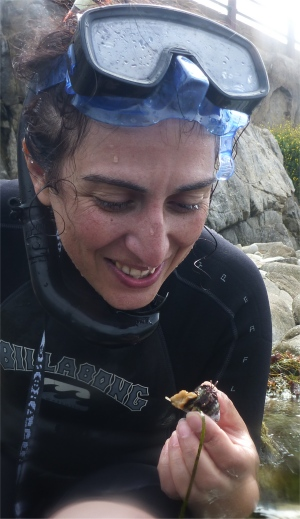
xSpecies xEndangered xProtected Areas xMonitoring xEducation xDistribution xModel x2013Talk x2013Scholar xTalk2013 xScholar2013 xArmenia xeurope
-Your direct email address(es): arakelyanmarine at yahoo.com
2013 Conference Paper:
Ecological Niche Modeling in GIS as Conservation Measures of Critically Endangered Populations of Lizards in Armenia
Presenter(s): *Marine Arakelyan, Yerevan State University, Armenia
"The biodiversity of stony semidesert in Ararat Valley of Armenia is enriched by rare, endangered and endemic species of flora and fauna. The semideserts are fast disappearing, being converted to agricultural use. To ensure the survival of the rare species of reptiles, the effective conservation strategies are needed, but currently no overall plan for saving the endangered species of reptiles exists. The GIS maps of southwestern Armenia which included the landscape belts, dirt roads impassable for vehicles and main roads passable for vehicles, settlements (villages and towns), isohypses and slope aspects are important tools for analyses of the main threats on population of critically endangered species of lizards Phrynocephalus horvathi and Eremias pleskei. Using our field experience, the basic range maps of Armenia lizards have been created, and with the help of ecological niche modeling, the zones where possible special protection areas and manage in-situ conservation will be outlined."
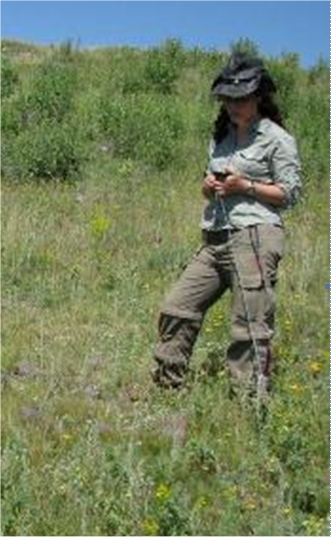 2013 Scholar Profile:
2013 Scholar Profile:
title or role in the organization: Researcher, Lecturer
interest keywords (please see instructions): biodiversity, conservation, endangered species, reptiles, critical sites, conservation area, database design, landscape analysis, monitoring, populations, environmental education.
Organization name: Yerevan State University, “Biodiva” NGO
Organization full street address (in your local format): 1 Alek Manoogian str, Yerevan
Organization full mailing address, if different: 1 Alek Manoogian str, Yerevan 0025, Armenia
Country: Armenia
Work phone with country and area code: +37410 556568
Work fax with country and area code:
Main email: arakelyanmarine@yahoo.com, arakelyanmarine@ysu.am
Organization Web site URL if any: ysu.am
Organization subject keywords (please see instructions): Faculty of biology, zoology, botany, biodiversity, students, education and researches.
Describe the work that your current organization does: I am employee as researcher and lecturer at Chair of Zoology, Faculty Biology, Yerevan State University. It is the biggest and main education center in Armenia and it is only one where teach zoology and botany http://faculties.ysu.am/faculties/en/Biology/person/1304
The department of zoology prepares experts, which complete the ranks of zoologists in Armenia and out of its borders. Armenia is an internationally recognized area of endemism and a biodiversity hotspot of global importance with high concentration of endemic, rare and 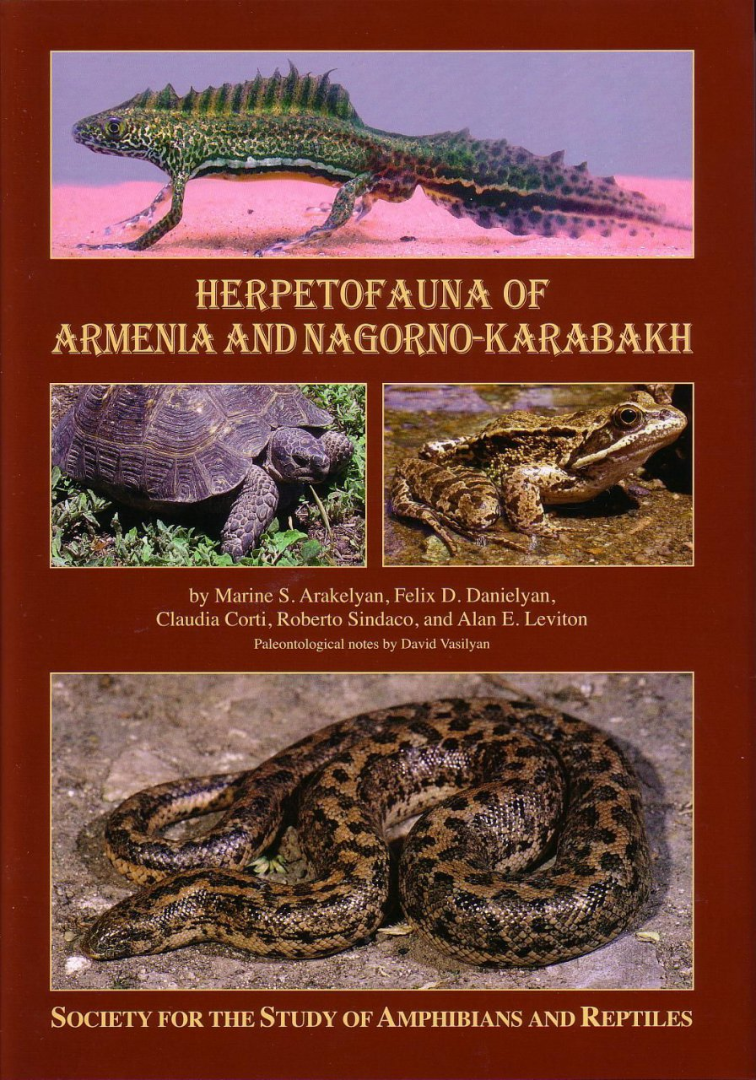 endangered species of animals, plants and fungi. Currently our research centre attempt to build a strategy for preservation of Armenian biodiversity utilizing modern conservation biology techniques. To ensure the success of future conservation efforts, Armenian biodiversity should be inventoried, monitored, and managed using modern techniques and methodologies employing conservation genetics and geographic information systems (GIS). However there are no special courses on GIS in a curriculum of our Faculty. Thus we need in training in both theoretical and practical knowledge and skills in data collection, database management and computer mapping in order to work independently with ArcGIS software, GIS project design and management which will get acquainted with application of GIS in field of biodiversity study and its conservation. I am a vice-president of “Biodiva” NGO too. Our organization has developed projects deal with conservation of Armenian biodiversity. The main idea of our organization is creating linkage among different specialists in area of biodiversity and makes multidisciplinary researches and conservation measures. Of course, the knowledge of GIS is became a cornerstone for our projects and its implementation.
endangered species of animals, plants and fungi. Currently our research centre attempt to build a strategy for preservation of Armenian biodiversity utilizing modern conservation biology techniques. To ensure the success of future conservation efforts, Armenian biodiversity should be inventoried, monitored, and managed using modern techniques and methodologies employing conservation genetics and geographic information systems (GIS). However there are no special courses on GIS in a curriculum of our Faculty. Thus we need in training in both theoretical and practical knowledge and skills in data collection, database management and computer mapping in order to work independently with ArcGIS software, GIS project design and management which will get acquainted with application of GIS in field of biodiversity study and its conservation. I am a vice-president of “Biodiva” NGO too. Our organization has developed projects deal with conservation of Armenian biodiversity. The main idea of our organization is creating linkage among different specialists in area of biodiversity and makes multidisciplinary researches and conservation measures. Of course, the knowledge of GIS is became a cornerstone for our projects and its implementation.
describe your personal role in the organization: In chair of Zoology of Faculty of Biology, of Yerevan State University I responsible for educating of first and second year of Bachelor students (Comparative anatomy of vertebrates) and Master students (methods of field study, systematics of vertebrates etc). I am supervisor for some bachelor and master theses on different topics in field of herpetology. I am an employee as senior research fellow and are spending a substantial time doing researches, writing articles, manuscript, textbooks, projects and reports as well as teaching the students interested in herpetology, biodiversity and conservation problems. My research may seem multiple to many, but it involves understanding evolutionary biology, speciation by hybridization among reptiles, study biodiversity and its conservation. I also have been working on the survey and study unique and rich biological diversity of reptiles of Armenia.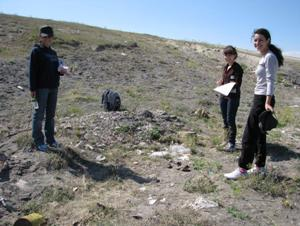 As vice-president of “Biodiva” NGO I am writing, submitting and carry out the field and laboratory works in the projects on topic of conservation of biodiversity and trying to organize a group of specialists which will be able to assess current status of rare and endemic animals, plants and fungi, finding key features of their habitat, developing their protection and implementation. My main aims are continue conservation oriented projects and involve in them as much students as possible.
As vice-president of “Biodiva” NGO I am writing, submitting and carry out the field and laboratory works in the projects on topic of conservation of biodiversity and trying to organize a group of specialists which will be able to assess current status of rare and endemic animals, plants and fungi, finding key features of their habitat, developing their protection and implementation. My main aims are continue conservation oriented projects and involve in them as much students as possible.
describe the history of your personal work in conservation and GIS: I graduated Yerevan State University in 1996, earned the PhD in Biology in 2001 in Institute of Zoology of Russian Academy of Science in 2001 and DSc in Institute of Zoology of Armenian Academy of Science in 2012. As team leader I successfully conducted following conservation projects:
2003-2004 Chelonian Research Foundation Linnaeus Fund Turtle Research Award “The distribution of turtles in Armenia”
2008-2009 Armenian National Science & Education Fund (ANSEF): “Survey on the distribution, systematics, and conservation status of terrestrial tortoises (Testudo “graeca”) in the Arax River Valley”.

(PHOTO: Endangered steppe-runner lizard, Eremias arguta transcaucasica)
2008-2009 Rufford Small Grant for Nature Conservation (RSG). “Conservation of the last surviving lizard population in the Caucasus – the racerunner Eremias arguta...
2009-2010. Armenian National Science & Education Fund (ANSEF): “Conservation of critically endangered populations of tortoise (Testudo graeca armeniaca) in Ararat Valley”.
2011-2012. Second Rufford Small Grant for Nature Conservation (RSG): “Development and implementation of conservation measures for an unique lizard population: the racerunner Eremias arguta transcaucasica in Armenia”
2011-2012. The Mohamed bin Zayed Species Conservation Fund – “Conservation of Critical Endangered Species of Reptiles”.
I was a leader of Armenian team in
2009-2011. Fundação Calouste Gulbenkian (Portugal): “Preserving Armenian biodiversity” Principal Investigators - Nuno Ferrand, Miguel A. Carretero, Marine Arakelyan, Sergei Drovetski, Felix Danielyan.
I was leader of zoological team in
2010-2012. State Committee of Science Fund: “Survey and conservation of animals, plants and fungi in athropogenic disturbed semi-desert ecosystems of Armenia”. Armenian Science Fund.
Now I am implementing the project funded by Armenian National Science & Education Fund (ANSEF) “Development of conservation strategies for the critically endangered species of reptiles of Armenia” The above mentioned projects have included GIS mapping and the GIS database which provide the cornerstone for assessing at risk populations for future monitoring and management, outlining exact locations of critical biodiversity sites and selection of territories recommended for stricter protection. (Photo Right, distribution of calendars and handbooks to local schools about the value and protection of endangered lizards)

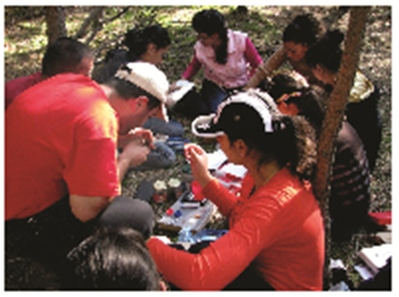 describe what is the most unique and the most challenging about the conservation/GIS work that you do: GIS first of all is very important tool for future development of management and study of the biological resources of the Armenia. GIS allows for storage, query and updating of spatial datasets. Databases based upon the layering of different types of information (genetic, demographic, geographic, and ecologic) will provide a tool for making science-based decisions for conservation and management. Moreover the deep knowledge of GIS modeling increases the range of scientific researches on topic of evolution of reptiles. Thus estimate suitable habitats for different species of rock lizard (parthenogenetic and biparental species), through the analysis of the relationship among the environmental variables (that are expected to affect the species’ physiology and probability of persistence) and known species’ occurrence records. Therefore, it will be the a model of the realized niche for rock lizards species and then project their distribution to the past and to future scenarios. The Armenian students I will train will graduate with a greater understanding of modern conservation biology and biodiversity management and form the next generation of wildlife managers.
describe what is the most unique and the most challenging about the conservation/GIS work that you do: GIS first of all is very important tool for future development of management and study of the biological resources of the Armenia. GIS allows for storage, query and updating of spatial datasets. Databases based upon the layering of different types of information (genetic, demographic, geographic, and ecologic) will provide a tool for making science-based decisions for conservation and management. Moreover the deep knowledge of GIS modeling increases the range of scientific researches on topic of evolution of reptiles. Thus estimate suitable habitats for different species of rock lizard (parthenogenetic and biparental species), through the analysis of the relationship among the environmental variables (that are expected to affect the species’ physiology and probability of persistence) and known species’ occurrence records. Therefore, it will be the a model of the realized niche for rock lizards species and then project their distribution to the past and to future scenarios. The Armenian students I will train will graduate with a greater understanding of modern conservation biology and biodiversity management and form the next generation of wildlife managers.